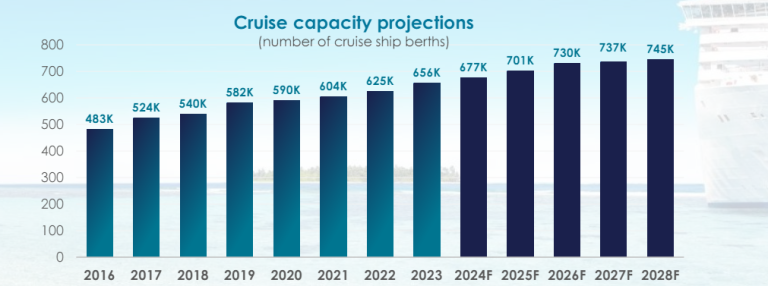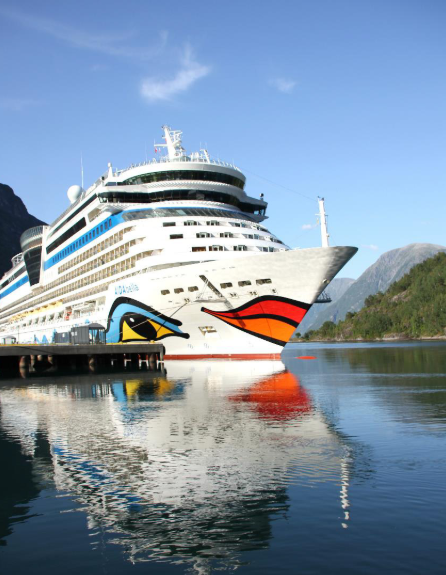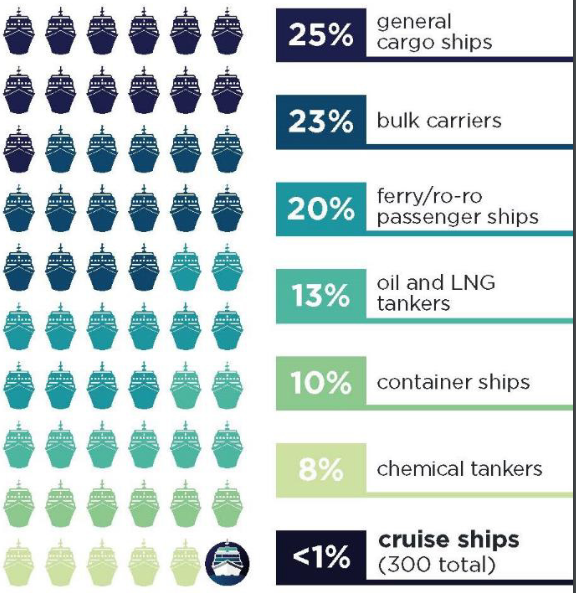CLIA 2024: the state of the Cruise Industry Report
The Cruise Lines International Association (CLIA) has published a detailed report on the cruise industry for the year 2024, covering various significant aspects such as passenger volume, trends, sustainability efforts, economic impacts, and future projections.
The CLIA represents a unified voice for the cruise sector, supporting policies and practices that promote safe, healthy, and sustainable cruise operations, tourism strategies that maximize the socio-economic benefits of cruise travel, and innovative technologies that protect our planet.
This year’s report presents data on passenger volume for 2023, which reached 31.7 million, surpassing 2019 numbers by 6.8%. North America saw 18.1 million passengers, a 17.5% increase, while in Europe the number rose to 8.2 million, a 6.5% increase. However, Asia recorded a 37.7% decrease, dropping to 2.3 million passengers. Australasia also had a slight decrease of 1.0%, with 1.34 million passengers. Conversely, South America saw a 6.6% increase, reaching 996,000 passengers compared to 935,000 in 2019.
Rapporto CLIA
Rapporto CLIA (2)
The document also highlights a continued demand for cruise vacations, with 82% of participants intending to repeat the experience, while 71% of international travelers are considering their first cruise. Additionally, 12% of cruise travelers go on a cruise twice a year and 10% go three to five times a year.
Cruise capacity forecasts indicate a 10% increase between 2024 and 2028, with nearly 40 million passengers expected by 2027. The average age of a cruise traveler is 46 years, with 36% of travelers under 40. Millennials are the most enthusiastic generation about cruises, with 22% planning to take another cruise.
Rapporto CLIA (3)
Cruising is a global industry with companies operating in all major regions of the world. In 2023, passenger numbers saw significant increases, especially in Brazil, Italy, and the United Kingdom, with the United States seeing a 19% increase compared to 2019. China reopened in September 2024 but did not reach previous passenger levels.
Among the most popular destinations, the Caribbean remained the most visited region, gaining nearly one million new visitors compared to 2019. The Mediterranean, the west coast of North America, South America, and Alaska also recorded significant increases.
Rapporto CLIA (4)
Rapporto CLIA (5)
The cruise industry has shown steady growth over the past 50 years, proving more resilient than other sectors during crises even though it currently occupies only 2% of the travel and tourism sector. Cruises are considered one of the safest and most responsible ways to travel, especially through companies increasingly pursuing an ambitious environmental sustainability program.
Rapporto CLIA (6)
Rapporto CLIA (7)
Current trends show that the number of new cruisers is increasing: 27% of travelers in the past two years are new to cruises, with a 12% increase over the previous year. A good 8-13% of cruise travelers travel alone, with higher rates in Canada and the United States. 28% of cruises include three or more generations of travelers, making cruises a popular choice for multi-generational trips. 11% of travelers considered only cruises as their vacation destination this year.
Expedition cruises have seen a 71% increase from 2019 to 2023. In the next two years, five new private islands or beach clubs will also open. 73% of cruisers say that travel consultants greatly influence their decision, and 45% of cruise travelers booked accessible excursions last year.
Rapporto CLIA (8)
Rapporto CLIA (9)
Rapporto CLIA (10)
CLIA member cruise lines are also taking significant measures for sustainability, pursuing the goal of net-zero emissions by 2050 through the use of various technologies, infrastructure, and sustainable practices. Investments in engines and propulsion technologies enable the use of low or zero greenhouse gas emission fuels.
New environmental technologies and sustainable practices include advanced water conservation systems, marine life protection systems, waste repurposing, shore power systems, air lubrication systems, and exhaust gas cleaning systems.
Rapporto CLIA (11)
Rapporto CLIA (12)
Rapporto CLIA (13)
Rapporto CLIA (14)
In 2022, cruise tourism generated 90% of the economic impact compared to 2019, with a total of $138 billion in economic output, supporting 1.2 million jobs and $43 billion in wages. 75% of the jobs supported by cruise activities are generated by land-based activities, especially in ports.
Rapporto CLIA (15)
Rapporto CLIA (16)
Throughout 2024, seven new cruise ships will also be launched:
- Sun Princess by Princess Cruises;
- Queen Anne by Cunard Line;
- Disney Treasure by Disney Cruise Line;
- Explora II by Explora Journeys;
- Utopia of the Seas by Royal Caribbean International;
- Silver Ray by Silversea Cruises;
- Mein Schiff 7 by TUI Cruises.
Rapporto CLIA (17)
This detailed overview, providing a comprehensive picture of the situation and objectives for 2024 and beyond, clearly illustrates how the cruise industry is not only recovering from the setbacks of the pandemic but is also heavily investing in growth, trends, technological innovations, and sustainability efforts to ensure a more responsible and prosperous future in the cruise sector.
For more information and updates on CLIA and new ship launches, visit Cruising Journal.

















